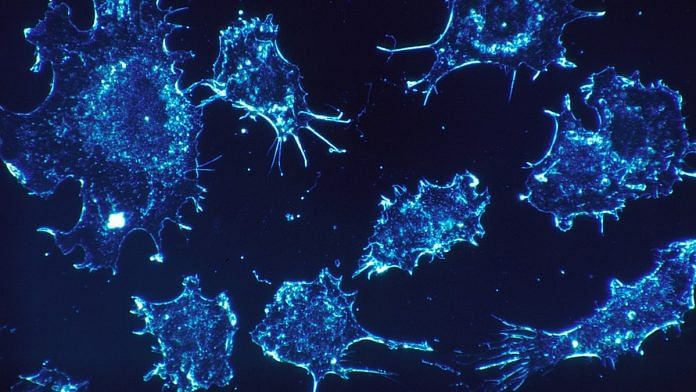In 2020, 70% of the 10 million estimated deaths due to cancer occurred in low and middle-income countries (LMICs). If left unchecked, the number of premature deaths caused by cancer is expected to rise to four million by 2040.
Many LMICs do not have the required health systems infrastructure to adequately treat and care for people with cancer because diagnostics, medicines and other services for comprehensive cancer care are simply not available.
In fact, treatment and care for cancer is available in less than 15% of LMICs against more than 90% in high-income countries and anecdotal evidence from Union for International Cancer Control (UICC) members across the globe support these figures.
How are essential medicines selected and distributed?
The WHO Model List of Essential Medicines was established by the World Health Organization (WHO EML) in 1977 and is updated every two years, including over time an increasing number of cancer medicines. Yet while this has certainly contributed to making essential medicines for cancer more available in LMICs – and UICC has been actively involved in the revisions process for cancer medicines since 2015 – it has not been to the extent that we’d hoped or expected.
Indeed, more than 50% of cancer medicines on the WHO EML are not available to patients living in LMICs (who represent over 45% of the world’s population). This is due in part to a weak health system and insufficient infrastructure but also because of other barriers, such as fractured diagnostics landscapes and shortages or maldistribution of the health workforce, as well as multidimensional, logistical and financial challenges: high costs, lack of quality assurance, frequent stock-outs, and complex regulatory pathways.
Furthermore, there are many different players who are too often working in siloes and they need to be brought together: national health authorities, WHO and UN agencies, civil society, oncology professionals, hospitals, the pharmaceutical industry, insurance companies, patient-oriented organizations and cancer patients themselves.
How can we improve access to essential medicines?
Two decades ago, antiretroviral medicines to treat HIV/AIDs were very expensive and only accessible in a few high-income countries. Since then, remarkable cost reductions have taken place, enabling access in resource limited settings. Today, first-line HIV drugs cost less than $100 per person per year, a 99% reduction from more than $10,000 in 2000. This reduction in cost and a multi-stakeholder approach has led to many inroads in addressing this disease. Another example is the access to the direct acting antivirals for the treatment of hepatitis C: while access continues to be an issue, progress has been made to make these drugs more affordable and accessible.
Following these successes in the communicable diseases area, focus on addressing cancer is now critical. We have what is needed, in particular the targets for reducing the burden of non-communicable diseases and the 2017 WHO cancer resolution.
Ensuring updated and revised evidence-based national essential medicines lists (NEMLs) that respond to a country’s needs, with the registration and approval of medicines in-country, is a crucial first step. There remains a discrepancy between NEMLs and the WHO EML, and policymakers may not be prioritising access to essential cancer medications.
To then guarantee that patients will receive the right medicines at the right time, measures need to be put in place for procurement and supply chain practises, treatment guidelines and the training of health workers – to ensure the smooth and timely delivery of essential cancer medicines up to the last mile.
Also read: Study finds liquorice may aid cancer treatments
How can a multi-stakeholder approach improve access to cancer medicines?
To implement an operating model that would dramatically improve access to essential cancer medicines in LMICs, we need to develop a new multi-sectoral public-private partnership approach that ensures not only the availability and affordability of cancer medicines but also the sufficient capacity to manage and monitor their supply as well as training on their use. We need to make access to essential cancer medicines in low-resource settings sustainable.
To address the issue of cost, for instance, we must develop an innovative mechanism to improve access to essential medicines still on patent. The application of public-health oriented voluntary licenses could come into play for cancer medicines, as this has worked for HIV and hepatitis C.
We must also set up a collaborative process to increase access to generic and biosimilar essential medicines and support the development of in-country capacity to successfully diagnose and treat cancers. This must include technical support in issues such as monitoring stockouts in focus countries, providing support in streamlining regulatory processes, procurement, forecasting and supply chain management. Of course, funding for these initiatives must be available in the longer term.
What will success look like?
The sequence of steps is crucial here, as an integrated approach is needed to ensure appropriate care. Diagnostics and medicines go hand in hand – ensuring capacity building for diagnostics and pathology is key.
Furthermore, an effective roll-out of a global initiative to improve access to essential cancer medicines in low-resource settings requires a tiered approach, with pilot projects in select countries to fully understand how to overcome the multiple challenges.
Ultimately, success will be measured by the number of patients who receive the cancer medicines that we are able to deliver into their country.
This article was originally published in the World Economic Forum.



